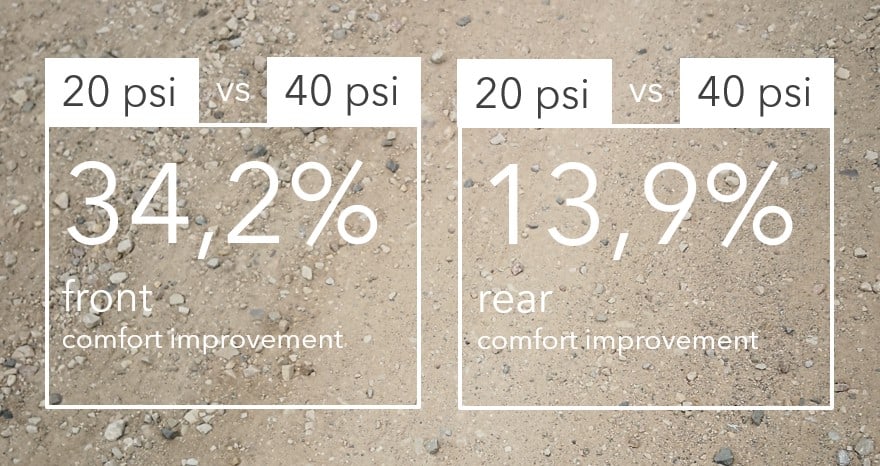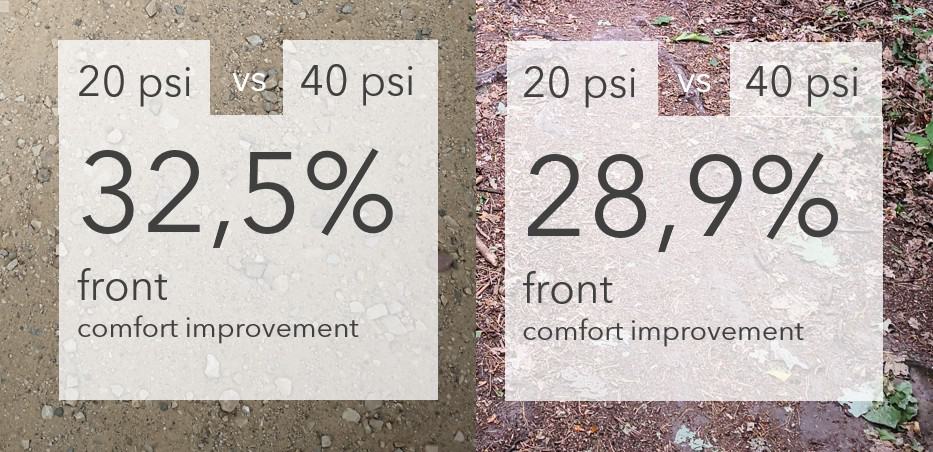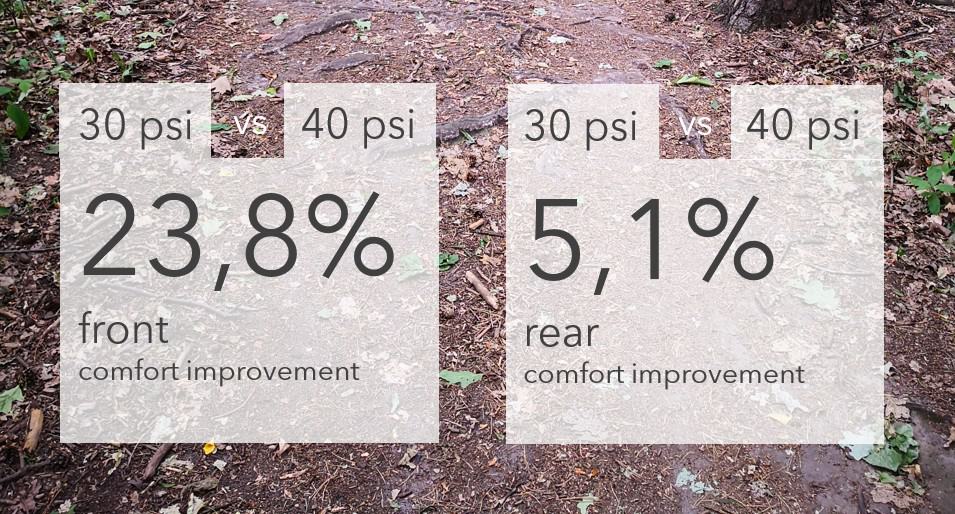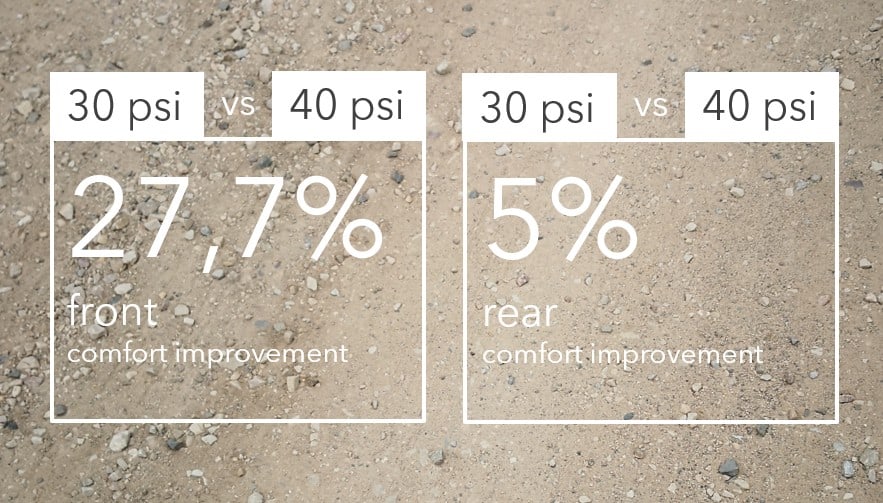Carbon gravel bikes like the new Cannondale Topstone, GT Grade, and BMC URS are advertised as a revolution in riding comfort thanks to their rear frame triangles that can flex vertically.
The Canyon Grail bikes are touted to be a dream to ride with their delightfully ugly Hover Bars and leaf-spring seatposts, and the Specialized Diverge bikes even come with front and rear hydraulic suspension dampers to smoothen your ride.
But for now, my previous tests of various seatposts and stems have made me realise that all of this wonderful engineering might only translate into rather modest improvements, especially when you see how much comfort can be gained by simply using less air in your tires.
If you don’t believe in this statement, try lowering the air pressure in your tires and feel the comfort difference for yourself.
Or better yet, look at the charts below where I’ve compared the vibration damping results between using 40 psi and 20 psi, and 40 psi and 20 psi air pressure. That’s both with and without additional comfort-improving solutions like a carbon flex seatpost and suspension stem.
Vibration Testing Tire Pressure (With A Suspension Stem & Seatpost)
You can see my vibration measurement procedure & outdoor test courses HERE.
You might think that this kind of combination would leave nothing to the tires. Yet lowering the pressure from 40 psi to 20 psi brings a whopping 35,4% improvement at the front and a significant 17,8% improvement to the back.
When we ride on fast gravel the numbers are very similar (a bike with lower tire pressure will be over 34.2% more comfortable in terms of the front of the bike and 13.9% in terms of the back of the bike).
If you are familiar with Cervelo’s chart describing different bike parts’ impact on overall ride comfort those results will not be surprising to you. Tires are the biggest contributor to the bike’s overall comfort. Both front and rear.
Vibration Testing Tire Pressure (With A Rigid Stem & Seatpost)
You can see my vibration measurement procedure & outdoor test courses HERE.
With a rigid stem (FSA), lowering the pressure from 40 psi to 20 psi improved the front-end comfort by 32,5% on the fast gravel road and 28,9% on the bumpy forest trail. This tire pressure change gives you a similar comfort improvement to the Redshift ShockStop stem!
With a rigid carbon seatpost (FSA K-Force), lowering the tire pressure from 40 psi to 20 psi gave me between a 10,5% (fast gravel road) and 17,5% improvement (bumpy forest trail). That’s even more comfort than the fancy leaf-sprung Ergon Allroad Pro seatpost can offer!
Vibration Testing Tires At 40 psi & 30 psi
You can see my vibration measurement procedure & outdoor test courses HERE.
In the above tests, I used tire pressures of 40 psi and 20 psi. I know that 20psi is very low, so let’s find out about 40psi vs 30 psi (using both Redshift ShockStop stem and Ergon Allroad Pro seatpost).
The results are more modest when comparing 20 psi to 30 psi. But you will still achieve a far more comfortable ride (especially at the front) just by lowering air pressure by 10 psi.
Summary
These numbers clearly show that your first step towards better ride comfort of your gravel bike should be buying a bigger tire and lowering its air pressure. That is why I am really excited about this new trend of allowing gravel bikes to use 700 x 50mm tires (the new Ronto Ruut is one example).
My tests also show that you should not stop there, and use other comfort-inducing bike parts like a suspension stem and suspension seatpost, comfortable saddle, comfortable shorts, and gloves.
It’s only when they all work together that you can really enjoy the most comfortable ride possible.












